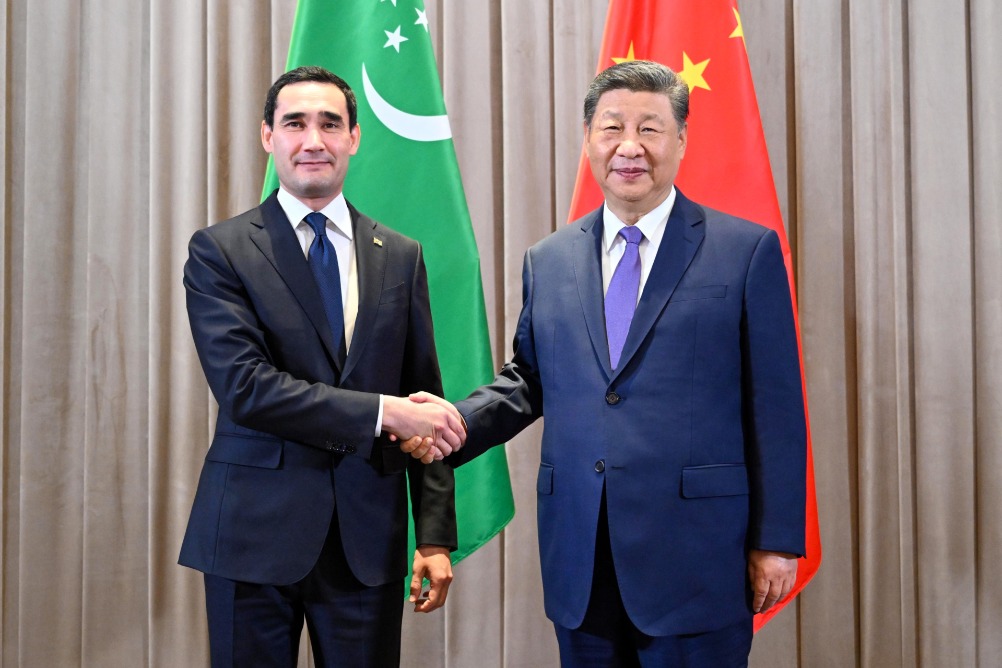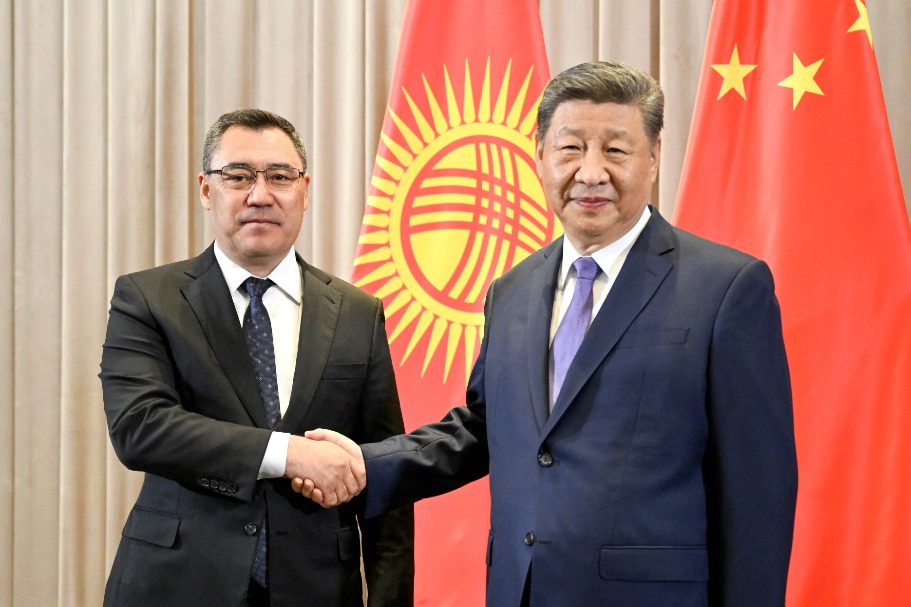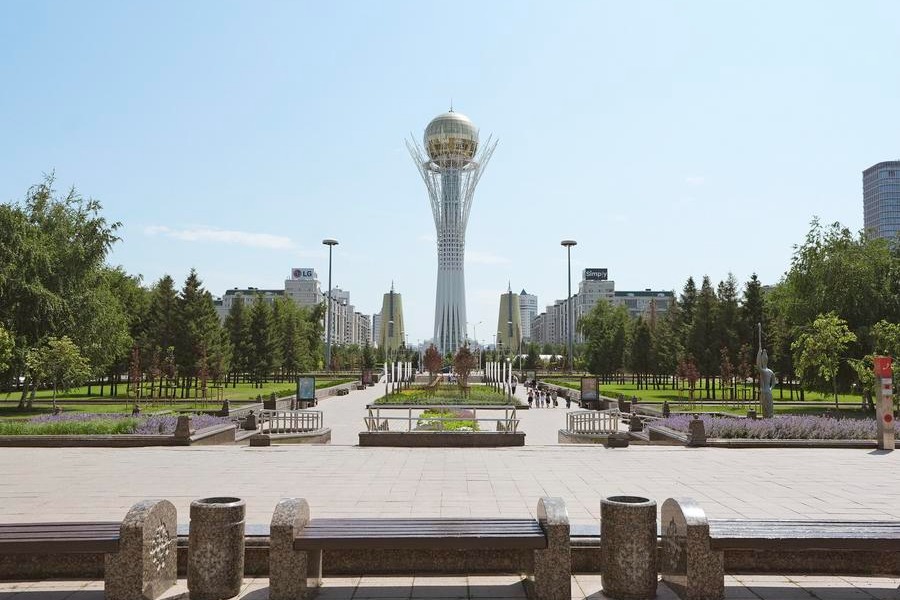Water powers neighborly harmony


China's cooperation with Central Asian countries, including Kyrgyzstan, has significantly expanded in recent decades, covering a wide range of areas, including water resources and agriculture. These sectors are strategically important for the region's sustainable development, ecological security, food self-sufficiency and regional stability. As one of the world's leading investors and a neighboring country of Kyrgyzstan, China promotes various forms of collaboration, particularly under the Belt and Road Initiative framework, with a focus on water management, irrigation, agroindustrial cooperation and the adoption of innovative technologies.
Central Asia is one of the world's most vulnerable regions in terms of water resources. The Syr Darya (river) and Amu Darya, which supply much of the region's water, are under increasing strain due to climate change, increasing demand for irrigation, and wastage of water. Kyrgyzstan and Tajikistan are the primary sources of transboundary rivers, while Kazakhstan, Uzbekistan, and Turkmenistan heavily depend on the water from these rivers for irrigation and drinking.
The water issue is not only ecological but also political. Periodic disputes over water allocation among the countries in Central Asia require a comprehensive and coordinated approach to resolve. In this context, the involvement of China, which shares borders with Kazakhstan, Kyrgyzstan and Tajikistan, is becoming increasingly prominent, because it offers infrastructure, technological and financial solutions to improve water management.
What's more, China has emerged as a key partner of Central Asian countries in modernizing their irrigation systems, building their reservoirs, and sharing its expertise in water resource management with them. A significant area of their collaboration is joint projects on transboundary water management. For instance, China and Kyrgyzstan have signed agreements on the sustainable use of the Naryn and Chu rivers and regularly consult each other on water balance and flow monitoring.
China's Ministry of Natural Resources has strengthened cooperation with the government agencies of Kazakhstan, Kyrgyzstan and Tajikistan on the rational use of transboundary waters. This initiative includes data sharing, joint hydrological monitoring stations, and professional training for specialists.
Additionally, China supports the building and modernization of hydraulic structures, particularly in Kyrgyzstan. With Chinese investment, irrigation canals and small hydropower plants in the three countries are being upgraded, improving water supply for rural populations and promoting "green energy" development.
Agriculture is a key economic sector for most Central Asian countries, including Kyrgyzstan. Despite its huge potential, the region faces challenges such as outdated farming techniques, inadequate irrigation systems, low labor productivity and limited access to external markets. China's cooperation in this regard is immensely helpful in that it is a vital source of investment, innovation and logistical solutions.
China has been increasing its investments in the region's agricultural sector, particularly in Kyrgyzstan and Kazakhstan. Bilateral agreements have led to the establishment of agricultural industrial parks, agrotechnology parks and joint farming ventures in the central Asian countries, with Chinese companies supplying modern machinery, drip irrigation systems, seeds and fertilizers. One notable example is a project growing organic fruits and vegetables in Kyrgyzstan's Chui and Issyk-Kul regions, with the produce exported to China.
Paying special attention to knowledge transfer and professional training, China organizes skill upgrading and training programs for Central Asian farmers and agronomists, including at Chinese agricultural universities. And joint research projects focus on promoting sustainable farming and agroecological practices, and checking desertification.
Logistics remain crucial for agricultural development. Under the BRI framework, China funds the construction and modernization of transport corridors linking Central Asia to Chinese markets. And Kyrgyzstan, due to its geographical proximity to China, plays a key role in facilitating agricultural exports to China. In particular, the China-Kyrgyzstan-Uzbekistan railway project could significantly reduce transportation costs and expedite agricultural deliveries, while dry ports and logistics hubs being developed near China's border, including in Kyrgyzstan's Naryn and Osh regions, will further smoothen freight transportation.
China also helps set quality and sanitary standards, enabling Kyrgyz and other Central Asian producers to access the Chinese market, with agreements being signed to certify and approve the delivery of goods such as honey, meat, grain and fruits from Kyrgyzstan.
But despite the positive developments, cooperation in water and agriculture between China and the Central Asian nations faces challenges. For instance, Chinese-backed water projects should take into consideration their environmental impacts, including soil degradation, altered water regimes and ecosystem changes, and ensure intensive farming based on China's model doesn't deplete resources. There is also a need to inform local communities about the developments.
But with proper oversight and joint planning, China-Central Asia cooperation can promote rural sustainable development, improve farmers' livelihoods, and modernize the agricultural sector. China's cooperation with Central Asian countries, including Kyrgyzstan, in water resources and agriculture is a key aspect of regional engagement. China not only provides financial and technical assistance but also facilitates technology transfer, infrastructure development and export capacity-building.
Achieving sustainable outcomes, however, requires a balanced approach that takes into consideration all stakeholders' interests, ecological sustainability and transparent implementation mechanisms. Amid the worsening climate change and food security challenges, such partnerships can serve as a foundation for Central Asia's long-term stability and prosperity.

The author is a professor and corresponding member of the National Academy of Sciences of the Kyrgyz Republic, and director of the Institute of History and Socio-Legal Education at the Arabaev Kyrgyz State University. The views don't necessarily reflect those of China Daily.
If you have a specific expertise, or would like to share your thought about our stories, then send us your writings at opinion@chinadaily.com.cn, and comment@chinadaily.com.cn.
































